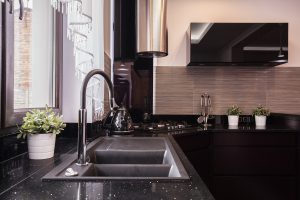Whenever we see photos of log cabins overlooking a lake or a river, we feel a certain calmness within us. It’s almost like seeing that photo reminds us of how beautiful life and the world can be. That’s why many of us will want to have a log cabin of our own. Whether it’s for a second home or a retirement home, we cannot help but think about living amongst these old tall trees and endless rivers when we’re old and gray. But log cabins can also put at risk the very nature their occupants want to enjoy.
Since these cabins are made with tree logs, it means that contractors need to source and cut tree trunks. A 24 x 20 x 9 feet log cabin will need 67 logs with a diameter of 10 inches. Imagine how many trees need to be cut down for one log cabin. Although there are sustainable ways to do this, there is more you can do to build an eco-friendly log cabin.
Build With Glass
Glass is one of the most sustainable building materials. It is fully recyclable and it has a host of environmental benefits such as mitigating climate change and saving natural resources. Glass bottles, for example, can be recycled up to 80%. You can use glass in varying degrees. You can use crushed glass on your driveway so the water from rain can flow freely.
Some log cabins integrate wood and glass. This makes the home feel roomier as the glass opens up the house to the natural surroundings of the home. Inside the log cabins, the owners like using glass for shower doors, sunroof, windows, and cabinets. Instead of relying on wood to build the cabin, homeowners can integrate other construction materials, specifically glass.
Prefer Recycled Timber
If you want to build an eco-friendly log cabin, you have to make use of recycled timber than fresh lumber. You will decrease deforestation by choosing recycled timber, which is stronger and more durable than virgin wood seeing as it underwent a compression process. Recycled timber resists the collection of moisture much more than fresh wood. It looks exactly the same as fresh wood, so there’s no difference aesthetically.
Use Solar or Hydro Energy

Solar power isn’t for urban areas alone. You can also harness solar energy for your log cabin in the woods. In fact, the plant and animal life there will benefit from not having electricity lines disrupt their natural habitat. Some studies showed that people who live in log cabins consume less energy because they spend their time outdoors. The only time you would need electricity is when you prepare your meals, shower, and sleep. You can use solar or hydro energy for these activities.
Install a Septic Sewage System
One of the things you have to focus on is how to dispose of the waste you will generate in the cabin. Connecting to the city’s sewage pipelines is not practical. You have to install miles’ worth of pipes to reach the main pipeline. The way you dispose of waste will have a serious impact on the environment.
You need to use a septic sewage system that will minimize the risk of untreated water going into the rivers and lakes. The tank will hold the waste your cabin generates until it is full enough that the wastewater will pass through a series of perforated pipes that will distribute it to the soil absorption field. There, the wastewater will get treated before it rejoins the groundwater.
Use Water Efficiently
Reduce your consumption of water. Yes, even if you’re living beside a river or lake. Grow native plants that are drought resistant. They will thrive in the climate where you are in rather than rely on your skills to water them and put them under the sun. You can also collect rainwater and use it to water the plants and vegetation.
Inside the cabin, use low-flow faucets, toilets, and showerheads, so they don’t use that much water. They save up to 50% of the water that a conventional showerhead usually wastes. For new home construction, low-flow toilets are required by law so make sure you comply with it.
While there are many other things you need to do to make sure you won’t be putting the environment at risk when you build your log cabin, these are the most important issues to focus on. If you plan to live in a log cabin, you have to make sure to do your part in protecting the environment. Be conscious of not only the way you build the home, but also with your choices of furniture, fixtures, and water and energy use.






